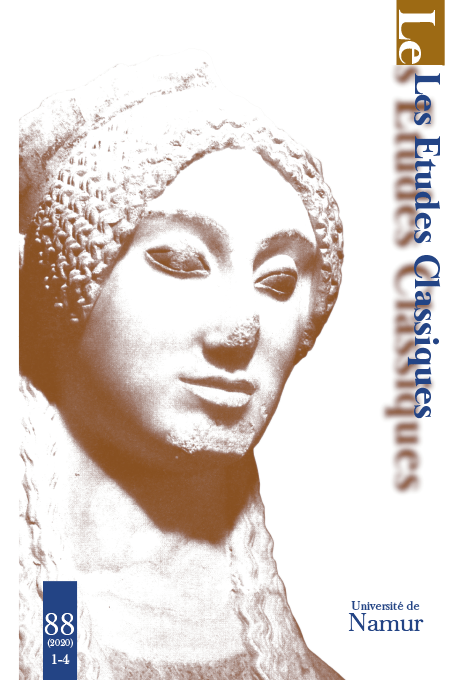 previous article in this issue previous article in this issue | next article in this issue  |

Preview first page |
Document Details : Title: The Irrealis in Homer Subtitle: Is there Internal Evidence for the Optative being the Older Mood in this Construction? Author(s): DE DECKER, Filip Journal: Les Études Classiques Volume: 92 Issue: 1-4 Date: 2024 Pages: 127-153 DOI: 10.2143/LEC.92.1.3293853 Abstract : In Homeric Greek both the indicative and the optative can be used to describe wishes and modal constructions that refer to the past and/or that are unfulfillable (the unfulfillable wishes on the one hand and the potential of the past and counterfactuals of present and past on the other) and this in contradistinction to Attic Greek, where the indicative is the only mood (with a very small number of exceptions). For the co-existence of the optative and the indicative ('modal indicative') several explanations have been offered, one of them being that the optative was the original mood (a view supported by the comparative evidence of other Indo-European languages) and that the indicative ousted it because it was more suited to indicate the pastness of the statement. In this article I will first describe the problem and then investigate whether or not there is internal evidence in the Odyssey to corroborate or refute the hypothesis that the optative was the older mood. I will analyse all the modal indicatives and check if they can contain an older optative, and at the end I will briefly mention three instances in which both the optative and the indicative had been transmitted. This article finds that in a majority of cases the indicative does indeed contain (or 'hide') an older optative, thus providing additional evidence for the substitution theory. En grec homérique, l’indicatif et l’optatif peuvent être utilisés pour décrire les souhaits et les constructions modales qui se réfèrent au passé et/ou qui sont irréalisables (les souhaits irréalisables d’une part et le potentiel du passé et les irréels du présent et du passé d’autre part), et ce contrairement au grec attique, où l’indicatif est le seul mode (avec un très petit nombre d’exceptions). La coexistence de l’optatif et de l’indicatif (indicatif appelé «indicatif modal») a fait l’objet de plusieurs explications, l’une d’entre elles étant que l’optatif était le mode originel (un point de vue soutenu par les données comparatives d’autres langues indo-européennes) et que l’indicatif l’a évincé parce qu’il était plus apte à indiquer le caractère passé de l’énoncé. Dans cet article, je décrirai d’abord le problème, puis je chercherai à savoir s’il existe des preuves internes dans l’Odyssée pour corroborer ou réfuter l’hypothèse que l’optatif était le mode le plus ancien. J’analyserai tous les indicatifs modaux et vérifierai s’ils peuvent contenir un optatif plus ancien, et à la fin je mentionnerai brièvement trois cas dans lesquels l’optatif et l’indicatif ont été tous deux transmis. Cet article constate que dans la majorité des cas, l’indicatif contient (ou «cache») un optatif plus ancien, apportant ainsi une preuve supplémentaire à la théorie de la substitution. |
|


